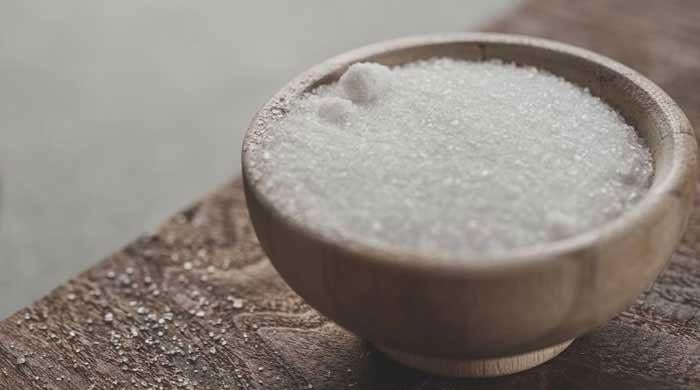Raw Sugar Import for Re-export Still on Hold Amid Domestic Sweetener Crisis
- Sources claim govt deferred import of raw sugar in a meeting.
- Sugar prices surged recently, hitting Rs164 per kg in Ramadan.
- Pakistan stands as seventh largest producer of sugar in world.
ISLAMABAD: Amid an ongoing domestic sweetener crisis, the government has yet to approve the import of raw sugar intended for re-export.
According to highly placed sources, the government has put off discussions regarding raw sugar imports during recent internal meetings.
When contacted on Sunday, Deputy Prime Minister Ishaq Dar stated, “The policy on raw sugar is still being developed and has not yet been submitted for approval.”
It is worth noting that government efforts to control domestic sugar prices have been unsuccessful, despite allowing sugar exports with the condition that local prices would not increase.
However, sugar prices have risen, reaching Rs185 per kilogram during Ramadan.
Ultimately, the government intervened, reaching an agreement to fix the price of sugar at Rs164 per kg for one month. Concerns are now rising that prices may increase again in the domestic market starting in April.
According to a draft proposal from the Ministry of Industry concerning re-exports, Pakistan is the world’s seventh-largest sugar producer, with an average annual output of 6.150 million metric tons. The sugar industry is a substantial component of the manufacturing sector, demonstrating considerable growth over the past decade and highlighting its significance to Pakistan’s economy.
Pakistan’s sugar industry is considerable, with 82 mills of varying sizes. However, it relies almost entirely on domestically grown sugarcane.
Sugar produced from sugar beet, an alternative source, accounts for an average of only 1.16% of annual production.
Globally, sugar beet accounts for approximately 20% of sugar production. As a result, annual production is heavily reliant on the health of the sugarcane crop each year.
Sugarcane is typically planted on 1.195 million hectares, primarily in Punjab and Sindh. Due to higher farmer returns, the area planted with sugarcane has increased slightly over the last decade.
However, total sugarcane production remains significantly below the installed capacity for sugar production. Sugar mills are estimated to use around 60% of their hundred-day crushing capacity during a typical crop year.
This indicates an idle capacity of approximately 4 million metric tons per year. When spread throughout the year, the sector’s idle capacity is considerably higher. Furthermore, crop yield and sucrose content are dependent on a variety of factors and fluctuate significantly from year to year. This has an impact on the variation in annual sugar production. Annual sugar production has ranged from 4.818 million metric tons in the crop year 2019-20 to 7.870 million metric tons in the crop year 2021-22, a variance of 63% over the last ten years.
Pakistan’s sugar production exceeds domestic demand in a successful crop year, resulting in an export opportunity. Pakistan exported 790,000 metric tons of sugar during the previous crop year. Conversely, Pakistan is compelled to import sugar in particularly poor crop years in order to meet domestic demand.
Overall, Pakistan has exported 3.918 million metric tons of sugar while importing 0.565 billion metric tons over the last decade. Sugar exports generated US$1.607 billion in revenue during this time, which is relatively low compared to competitors with similar industry sizes.
The substantial idle capacity in the local sugar industry offers a good opportunity to refine imported raw sugar without the need for substantial capital expenditure. The refined sugar could be used primarily for export to improve Pakistan’s trade balance. Simultaneously, it could be made available on the domestic market during times of scarcity to ensure market stability and eliminate the need to import refined sugar at exorbitant prices, thereby conserving desperately needed foreign exchange.
Pakistan’s geographical proximity to China, Afghanistan, and Central Asia, as well as lower transportation costs, may provide a competitive advantage in these markets. These markets are estimated to have an annual export potential of approximately 10 million metric tons. Bahrain, Oman, and Bangladesh are also potential export markets.
Furthermore, refining raw sugar will distribute the capital cost of sugar mills, assisting in lowering the domestic sugar price.
Under existing regulations, raw sugar is classified under HS code 1701.1400 in the Pakistan Customs Tariff. It currently attracts a 20% Customs Duty, a 6% Additional Customs Duty, an 18% Sales Tax, and a 6% Withholding Tax.
Furthermore, raw sugar imports are permitted under the Import Policy Order 2022. However, sugar exports are prohibited unless specifically authorized by the Federal Government in accordance with serial 8 of Schedule I of Export Policy Order 2022, read in conjunction with Rule 872 of SRO 957(1)12021. There is no regulatory duty on the export of refined sugar.



Comments (0)
No comments yet. Be the first to comment!
Leave a Comment